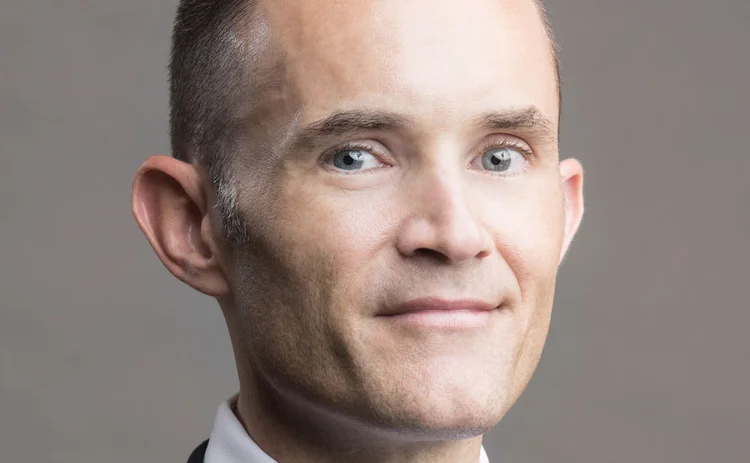
Private bank of the year: Citi
Asia Risk Awards 2017

Friday September 15 saw the S&P 500 edging over 2,500 to reach a record high while the same day saw the Dow Jones Industrial Average have its best week since December last year. These animal spirits are not just in the US: indexes and asset classes globally are hitting record highs. For private wealth managers such market conditions are a dream: rising markets mean profitable products which in turn lead to happy customers.
Adam Cowperthwaite, head of capital markets for Asia at Citi Private Bank, says the firm has indeed had a good year. But Cowperthwaite is keen to point out that this year’s success has been a product of changes to the business that have been in place before 2017.
“To get to where we are today, we need to look back three years. Clearly 2015 was a very good year, particularly on the equity side because of the big bull run in China, which then came off significantly in the second half of that year. And that in turn led us into the sharp sell-off that we had in the start of 2016. The end result was we saw volumes move at a relatively slower pace through 2016, compared to the year before.”
Cowperthwaite says Citi Private Bank used this period of relative calm to retool the business, both in terms of product scope and also the staff and coverage the firm had in place to sell its products – with the ultimate aim of improving the offering for the end-client. One key area identified by Cowperthwaite and his team was the types of products offered to clients, and whether these are actually appropriate.
“Overall business has been good this year but what differentiates Citi from its competitors is that we are proactively driving clients into a wider range of products that better meet their requirements, rather than simply reaching for the standard product suite,” he says. “We are working with clients to look at product selection in the context of their overall portfolios.”
Cowperthwaite gives the example of equity derivatives, where a few products, notably accumulators and decumulators, dominate the market but which Cowperthwaite says are often not suitable for the end-client.
“Our intention is that accumulators and decumulators should not be the dominant product set for our clients and instead our clients are directed to more suitable structures,” he says. “These products have been used too broadly in the past. As an example, if a client is bullish an accumulator isn’t necessarily the right product because it works best in a sideways market. Likewise if a client already had a fair amount of leverage it’s not necessarily the right product because it adds leverage.”
Cowperthwaite says he has given a number of seminars and teach-ins in 2016 to both clients and internal teams to get across the message that Citi has a very broad product suite, with a wide variety of structures to achieve clients’ aims.
“This has put us in a very good spot as we came into this year to grow the business, which clearly has been helped by market sentiment. Even in periods this year when the mood has been not quite as bullish, we have been able to market products that are more suitable for that environment,” he says.
One example of more attention being paid to the appropriateness of products has been an increasingly proactive approach to unwinding client positions. Typically structured products are sold and held to maturity but if the underlying performs well in the early part of a contract it can often be profitable to unwind early.
One notable product that performed well for Citi is called the Advanced Bonus Coupon, a relatively simple product where the downside risk precisely matches the underlying but if the underlying at maturity is above the initial price then investors get either the minimum of a fixed percentage return or the performance of the stock. One such coupon linked to HSBC saw a dramatic rise in 2016.
“HSBC rebounded and the optionality in the structure (which leveraged the 5–6% yield on the shares) gave clients holding the product a profit on unwind of around 20%, whereas the underlying stock had only moved by around 10% to 15%,” says Cowperthwaite.
Citi Private Bank also continued to invest heavily in automation of its structured products sales, arguing the multi-issuer platforms which were set to revolutionise the market 18 months ago require too much standardisation to be practical. Instead Citi has focused on improving its in-house offering.
“I am keen to facilitate smaller minimum deal sizes for our clients, particularly on foreign exchange products, as this can help to manage the portfolio’s risk and return profile. When you are looking at doing higher volumes in smaller sizes you need to automate that process and we have invested a lot of time and money in doing so,” he says.
Only users who have a paid subscription or are part of a corporate subscription are able to print or copy content.
To access these options, along with all other subscription benefits, please contact info@risk.net or view our subscription options here: http://subscriptions.risk.net/subscribe
You are currently unable to print this content. Please contact info@risk.net to find out more.
You are currently unable to copy this content. Please contact info@risk.net to find out more.
Copyright Infopro Digital Limited. All rights reserved.
As outlined in our terms and conditions, https://www.infopro-digital.com/terms-and-conditions/subscriptions/ (point 2.4), printing is limited to a single copy.
If you would like to purchase additional rights please email info@risk.net
Copyright Infopro Digital Limited. All rights reserved.
You may share this content using our article tools. As outlined in our terms and conditions, https://www.infopro-digital.com/terms-and-conditions/subscriptions/ (clause 2.4), an Authorised User may only make one copy of the materials for their own personal use. You must also comply with the restrictions in clause 2.5.
If you would like to purchase additional rights please email info@risk.net
More on Awards
Trading systems: structured products/cross-asset – Murex
Murex won the Trading systems: structured products/cross-asset award at the 2025 Risk Markets Technology Awards for its MX.3 platform, praised for its flexibility and advanced analytics
Best vendor for system support and implementation: Murex
Murex has won the Best vendor for system support and implementation at the Risk Markets Technology Awards, recognised for its innovative MX.3 platform, exceptional client support and seamless implementation services
FRTB-IMA product of the year: Murex
Murex wins FRTB-IMA product of the year for its advanced, scalable MX.3 platform enabling seamless regulatory compliance
Pricing and analytics: equities – Finastra
Finastra’s Sophis platform wins the Risk Markets Technology Award for Pricing and analytics in equities, recognised for its robust capabilities in equities and derivatives trading
Best execution product of the year: Tradefeedr
Tradefeedr won Best execution product of the year for its API platform, which standardises and streamlines FX trading data, enabling better performance analysis and collaboration across financial institutions
Collateral management and optimisation product of the year: LSEG Post Trade
LSEG Post Trade wins Collateral management and optimisation product of the year for interconnected services that help mitigate counterparty risk and optimise capital usage
Clearing house of the year: LCH
Risk Awards 2025: LCH outshines rivals in its commitment to innovation and co-operation with clearing members
Driving innovation in risk management and technology
ActiveViam secured three major wins at the Risk Markets Technology Awards 2025 through its commitment to innovation in risk management and technology







